This Page is Home![]() Updates
Updates
What's New
Penta-Ocean Construction Co., Ltd.
Obtained Evaluation Certificate on New Construction Method Using Calcia-Improved Soil,
a Green Material Made from Steelmaking Slag
- Use of On-site Reforming Method to Widen Application -
Tokyo, Japan - July 05, 2023 - Penta-Ocean Construction (Chiyoda-ku, Tokyo, President: Takuzo Shimizu), jointly with JFE Steel Corporation (Chiyoda-ku, Tokyo, President: Yoshihisa Kitano), Nippon Steel Corporation (Chiyoda-ku, Tokyo, President: Eiji Hashimoto), Toa Corporation (Shinjuku-ku, Tokyo, President: Takeshi Hayakawa), and Nippon Kaiko Co., Ltd. (Chuo-ku, Kobe city, President: Seiichiro Yamashita), has been developing the "On-site Reforming Method of Calcia-improved soil," which enables ground improvement of soft surface soil layers at the sea bottom.
Based on data obtained from construction tests conducted in actual sea areas in July and August 2022(Figure 1), we have now received an evaluation certificate (Certificate No. 22006) as a result of a strict examination by the Japan Coastal Development Institute of Technology for Examination and Certification of New Coastal Technologies Developed by Private Companies*1 (Figure 2).
Calcia-improved soil is a mixture of soft dredged soil*2 and Calcia-improving material*3 made from steelmaking slag, with enhanced physical and chemical properties (Figure 3). The improved soil exhibits hardening and solidifying functions. Suitable for controlling negative impact (turbidity) on the marine environment during construction, it promotes effective utilization of dredged soil rather than simple disposal. Applicable for use in reclamation and as filling material in shallows, tidelands and seaweed meadows, it contributes to the creation a blue carbon ecosystem*4.
Currently, the most popular construction method is the pre-mixing method, which entails pre-mixing of Calcia-improved soil on board a hopper barge*5 or in soil tanks, followed by the transportation to the designated area and damping into the sea at the project site.
In contrast, the new On-site Reforming Method employs a watertight bucket (Figure 4) fitted to a proprietary barge generally used in the Sand Compaction Method*6, an existing offshore ground improvement method. The mixing of the clay with Calcia-improving material is performed inside the bucket at the project site (in-situ), and the soft surface layers at the sea bottom are replaced with Calcia-improved soil (Figure 5.) Since the entire construction sequence is carried out near the sea bottom, the method received a high appraisal during the evaluation procedure as a method with a minimum negative impact on the surrounding sea areas.
The development of the method is expected to accelerate the wide application of Calcia-improved soil for the construction of submerged dikes required for creating shallows and tidelands (Figure 6), the construction of breakwaters to prevent sediment inflow into waterways (Figure 7), as well as the measures against scouring*7 around quay walls and breakwaters. We will strive to commercialize this technology and promote the wider application of Calcia-improved soil.
Going forward, we will continue to contribute to the creation of a sustainable society by focusing on the development of environmentally friendly products and construction methods.
[Features of On-site Reforming Method of Calcia-improved soil]
●Improves surface layers of the sea bottom to the depth of 2.5m with Calcia-improved soil
-The different scope of application from conventional methods (damping Calcia-improved soil produced on land or on board a barge) enables wider use of Calcia-improved soil
●Enables simplified operation of construction process
-In-situ (sea bottom) operation eliminates the need for transportation of sludge or Calcia-improved soil
●Very low impact (turbidity) on the marine environment during construction
-No turbidity caused by agitation of clay because mixing with Calcia-improving material is performed in a sealed bucket
-The Calcia-improved soil is not prone to generate turbidity by its nature. This method entails discharging of Calcia-improved soil near the sea bottom, further reducing the occurrence of turbidity due to a smaller drop height compared to the simple dumping
●Contributes to enhance quality of Calcia-improved soil
-During excavation of seabed by the bucket, the soil is not mixed with excess water, which improves the strength and quality
-Real-time monitoring of amount of excavated clay in the bucket and Calcia-improving material achieves stable control of mixing rate
●Enables construction at large water depths
[Evaluation details]
●The method ensures the application of the same mix design of Calcia-improved soil as the conventional method
●The method improves 2.5m of the ground surface layers with Calcia-improved soil
●The application of the method does not adversely affect the water quality of the surrounding sea areas
*1 A system to verify and evaluate the technology details at the request of a client based on the application submitted by a third-party organization from an objective and neutral viewpoint
*2 Sludge generated from seabed excavation during port and harbor construction containing high water and clay contents
*3 A material made from steelmaking slag, which is a byproduct from the production of steel, with controlled component ratio and particle size
*4 Marine ecosystems such as marine seaweed meadows sequestering and storing blue carbon are called "blue carbon ecosystems" and are attracting attention as they are expected to contribute to carbon neutrality achievement
*5 Flat-bottomed boats built to carry heavy cargoes in rivers, canals, and ports
*6 A ground improvement method by constructing firmly compacted sand piles
*7 The phenomenon of mud and soil around the bottom of the structures being washed away by water currents and waves
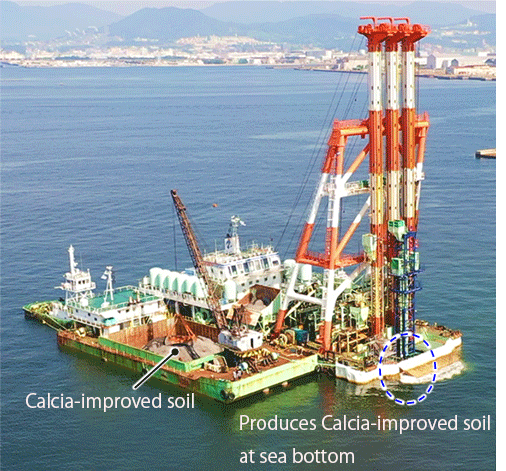
Figure 1 Construction test of On-site Reforming Method in actual sea area
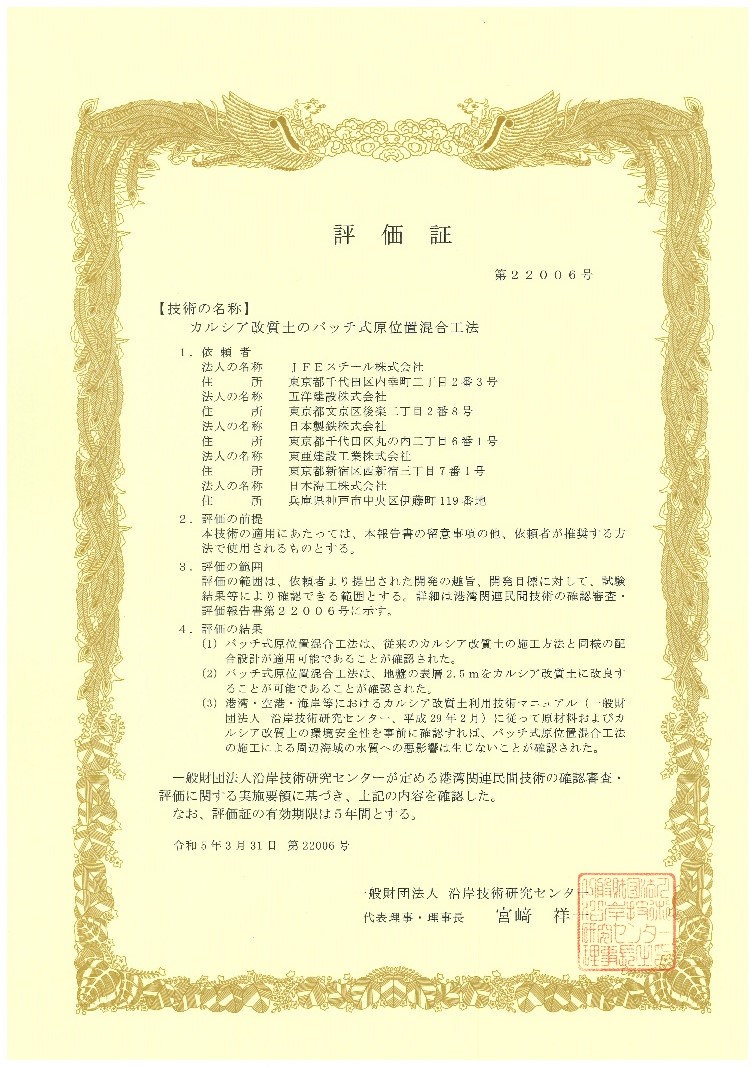
Figure 2 Evaluation certificate

Figure 3 Calcia improved soil
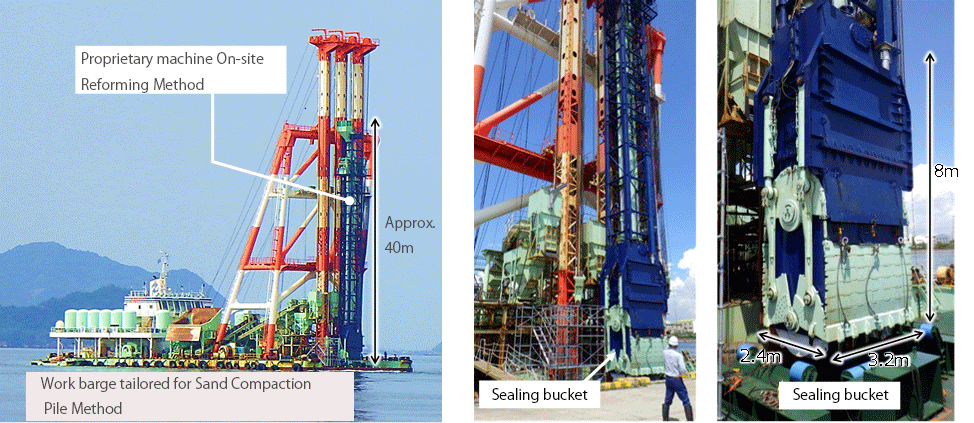
Figure 4 Work barge for On-site Reforming Method
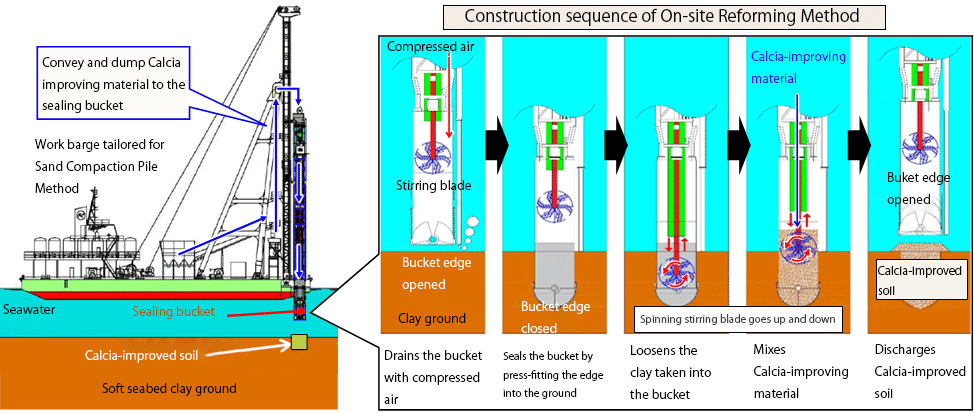
Figure 5 Construction sequence of On-site Reforming Method
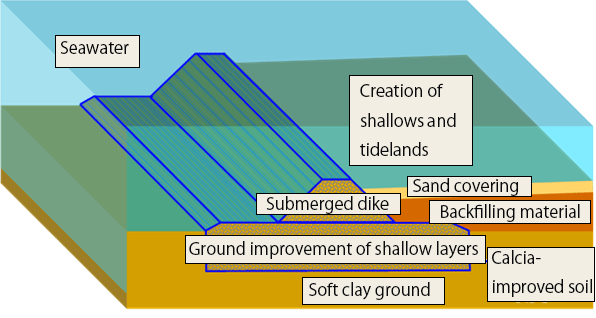
Figure 6 Application example of On-site Reforming Method
1. Construction of submerged dike for retaining soil in shallows and tidelands
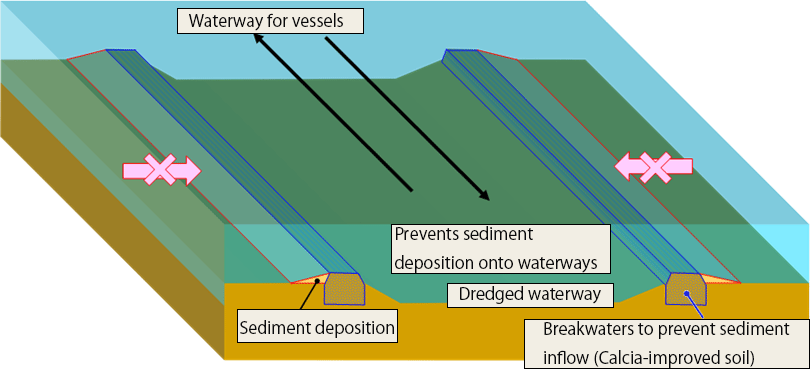
Figure 7 Application example of On-site Reforming Method
2. Construction of breakwater to prevent sediment inflow into waterways
